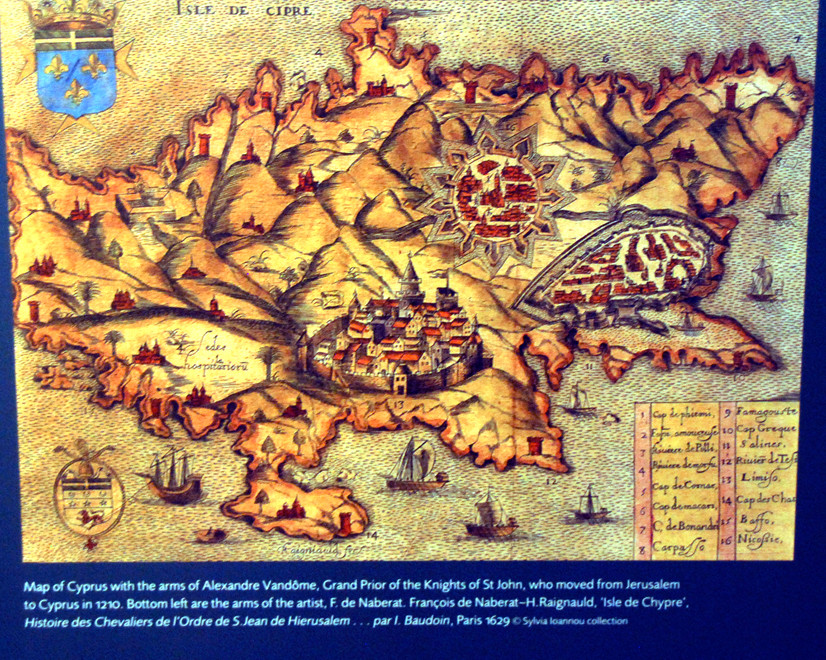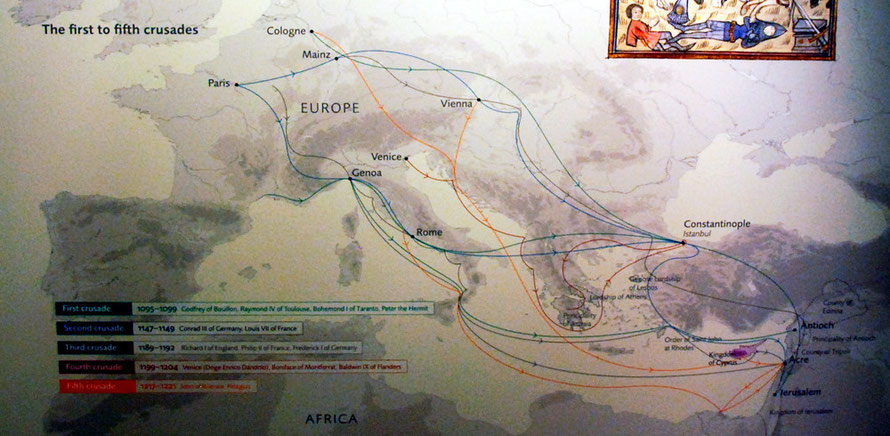Lusignans to the Ottoman Empire
A. Introduction
These brief notes that I hope to add to one day. There is more on the Lusignans in passing on my Sweet Salt page and more detail on the Knights Hospitaller in both Cyprus and London on my Kolossi page.
B. The Lusignans
In 1191 Richard the Lionheart on his way to the Third Crusade invaded and defeated the ruling Byzantine prince of Cyprus, Isaac Komnenos, after the latter had caused offence to Richard’s sister and fiancee.
Having pillaged the island Lionheart sold it to the Knights Hospitaller. The Hospitallers sold Cyprus back to Lionheart after the revolt and brutal repression of the Cypriots (for more on the Knights Hospitaller see my Kolossi page). Lionheart then resold it to Guy de Lusignan, the French noble who had been the Crusader king of Jerusalem before Saladin’s victory in 1187.
Lusignan rule by Frankish knights continued for three hundred years until Venetian conquest in 1489 and saw immense wealth created through the European–Middle Eastern trade passing through the port of Famagusta and the development of sugar production on the island (see my Sweet Salt page).
This wealth led to a massive Roman Catholic church building programme sponsored by the wealthy merchants and church functionaries living a life of luxury and ostentation (to the great cost of the islanders who were reduced to grinding serfdom (see Rough Guide, 2009: 376-8).

Cyprus was an important staging post in the era of the Crusades (1095-1225), violent campaigns that caused major strains between the Latin and Orthodox Christians and Muslims.
The first crusade aimed to take Jerusalem from the Muslims whilst the third and fourth seized Cyprus and Constantinople from the Orthodox Christians.
C. Venetians
Thubron recounts the betrayal of the Venetian commander of Nicosia who finally surrendered to the Ottoman siege in the 16th century. Rather than being given safe passage, as agreed, the Ottoman had the Venetian commander's comrades chopped to pieces before him. He then had his ears and nose chopped off and was forced to carry earth and kiss the ground before being flayed alive. His skin was then stuffed with straw and paraded up and down the coast of Syria. Apparently 50,000 Turks were killed in the siege.
D. The Ottomans
The Ottomans invaded Cyprus in 1571. The Ottoman Empire had developed out of Anatolia in present North Western Turkey in the fourteenth century and quickly spread through military campaigns and the establishment of an efficient tax-gathering bureaucracy and a tolerant attitude to the Orthodox church. It came to control a vast swathe of territory from the Dniestir River – near the border of Poland - through the Balkans, Greece, Turkey, the Levant, Iraq and Egypt and the southern coast of the Mediterranean. The empire was at its heyday during the reign of Süleymän I (1520-66). By the eighteenth century the empire was on the wain and its possible collapse became the core of the ‘Eastern Question’ for the dominant Western powers. Ottoman political life continued under European tutelage until 1920 (see Inalcik, H. 1994 The Ottoman Empire: The Classical Age 1300-1600.)




